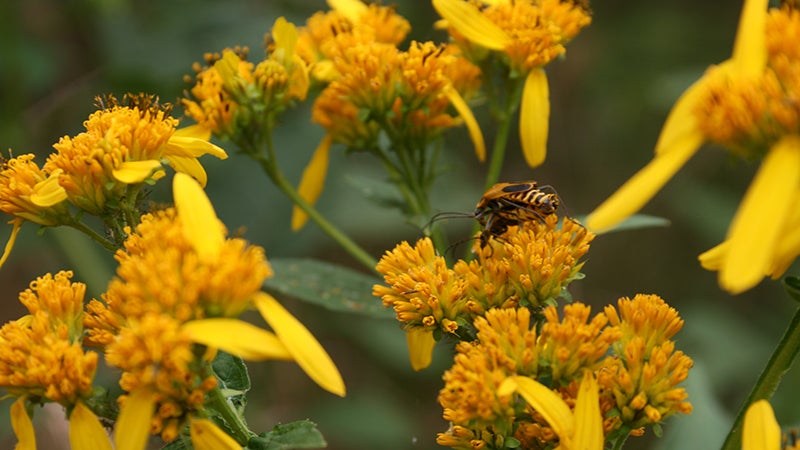Wildflower of the Month
Published 9:49 pm Friday, October 12, 2018

- Harmless soldier beetles love this plant, busily mating and eating at the same time.
|
Getting your Trinity Audio player ready...
|
Helen Hamilton
Crownbeard
Verbesina occidentalis
The flowers of Crownbeard consist of only a few golden-yellow rays, often bent backward from a mop-like center of small yellow disk flowers, giving the cluster an unkempt, ragged appearance. But the flowering is prolific, at the top of 6-foot stems and the plants grow in drifts, very visible in the fall.
Crownbeard prefers full sun and moist soil, growing throughout southeastern U.S. and most counties in Virginia. The plant self-seeds and spreads from a large perennial crown that will produce many new plants. It is seen often along roadsides, meadows and old fields.
This is a long-blooming native perennial, producing flowers from August through October. Harmless soldier beetles love this plant, busily mating and eating at the same time. The nectar feeds butterflies and other insects that are storing nutrients for winter.
Wingstem (Verbesina alternifolia) is a close relative with similar flowers but has a few more petals. It grows in wetter conditions throughout Virginia but is not often seen in the Coastal Plain. Both plants have winged stems that are actually extended petioles. These two plants can be distinguished because the leaves of Crownbeard grow opposite on the stem, and those of Wingstem are alternate. The species name of Wingstem “alternifolia” describes the alternate leaves.
Another relative is Frostweed (Verbesina virginica) with clusters of white flowers. This plant is native to southern U.S. to Texas, but in Virginia Frostweed in found in only a few coastal counties.
HELEN HAMILTON is past president of the John Clayton Chapter, Virginia Native Plant Society. Contact her at helen48@cox.net. For more information about native plants, visit www.vnps.org.

